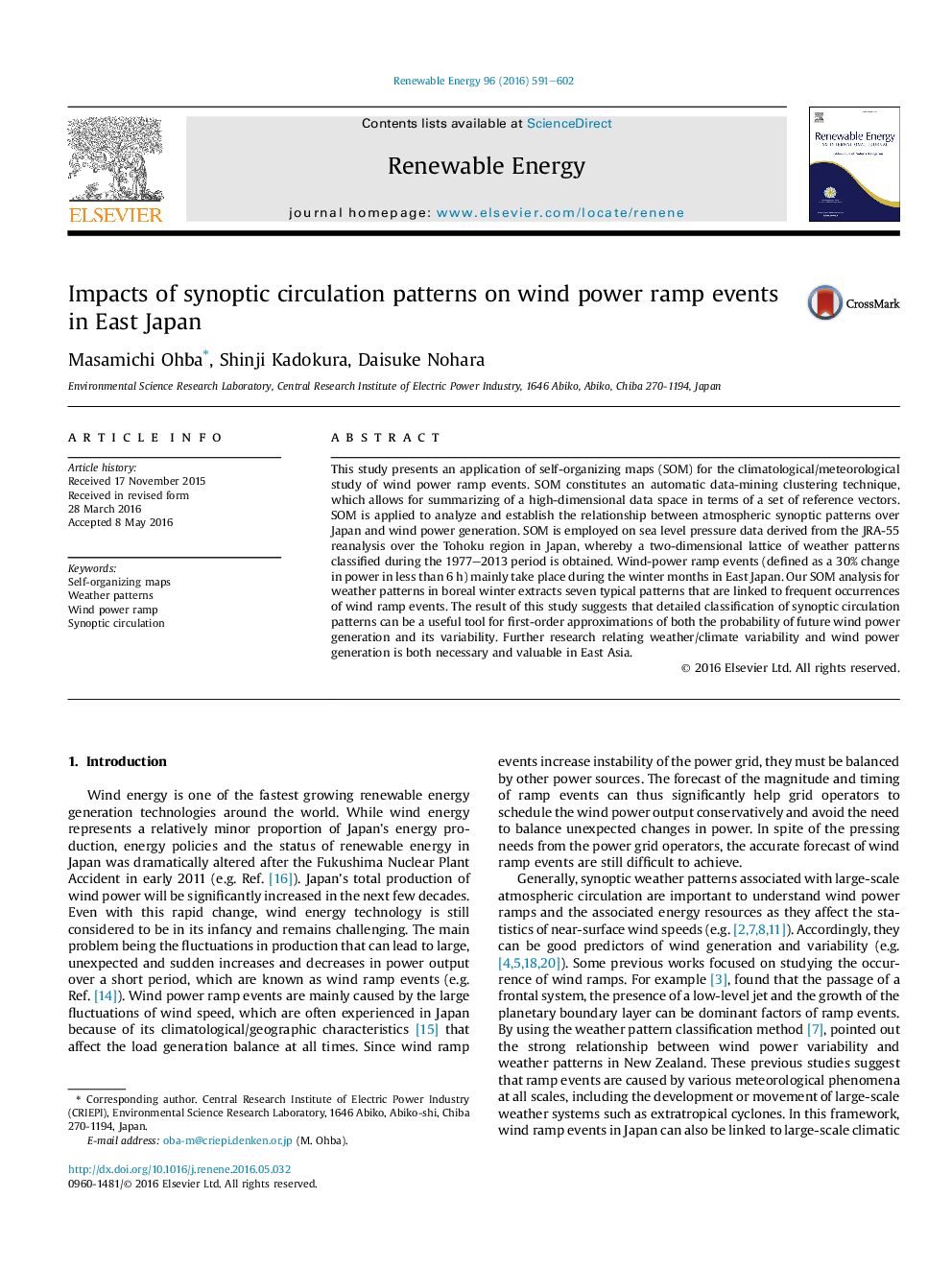| Article ID | Journal | Published Year | Pages | File Type |
|---|---|---|---|---|
| 10293901 | Renewable Energy | 2016 | 12 Pages |
Abstract
This study presents an application of self-organizing maps (SOM) for the climatological/meteorological study of wind power ramp events. SOM constitutes an automatic data-mining clustering technique, which allows for summarizing of a high-dimensional data space in terms of a set of reference vectors. SOM is applied to analyze and establish the relationship between atmospheric synoptic patterns over Japan and wind power generation. SOM is employed on sea level pressure data derived from the JRA-55 reanalysis over the Tohoku region in Japan, whereby a two-dimensional lattice of weather patterns classified during the 1977-2013 period is obtained. Wind-power ramp events (defined as a 30% change in power in less than 6Â h) mainly take place during the winter months in East Japan. Our SOM analysis for weather patterns in boreal winter extracts seven typical patterns that are linked to frequent occurrences of wind ramp events. The result of this study suggests that detailed classification of synoptic circulation patterns can be a useful tool for first-order approximations of both the probability of future wind power generation and its variability. Further research relating weather/climate variability and wind power generation is both necessary and valuable in East Asia.
Related Topics
Physical Sciences and Engineering
Energy
Renewable Energy, Sustainability and the Environment
Authors
Masamichi Ohba, Shinji Kadokura, Daisuke Nohara,
